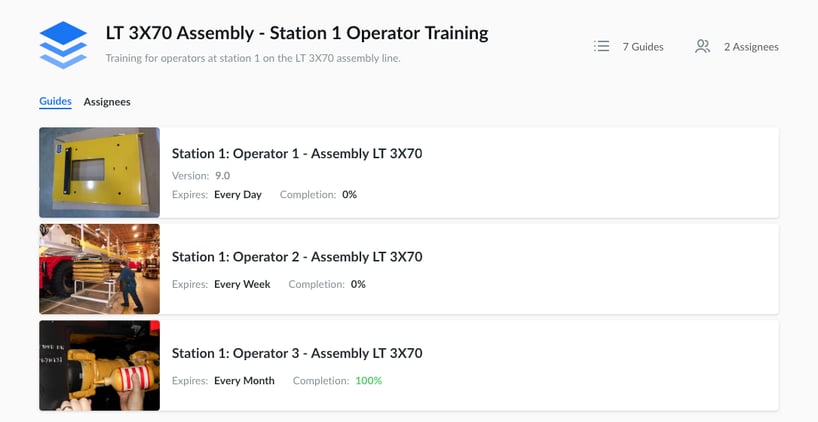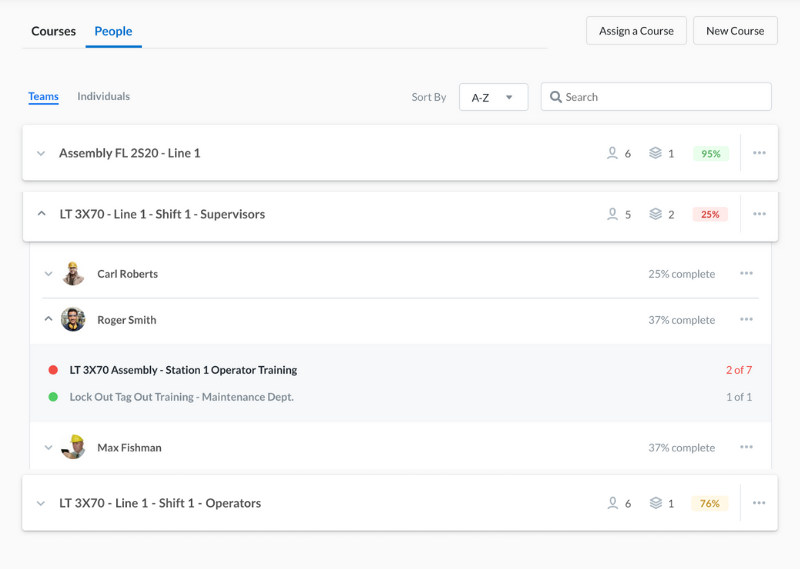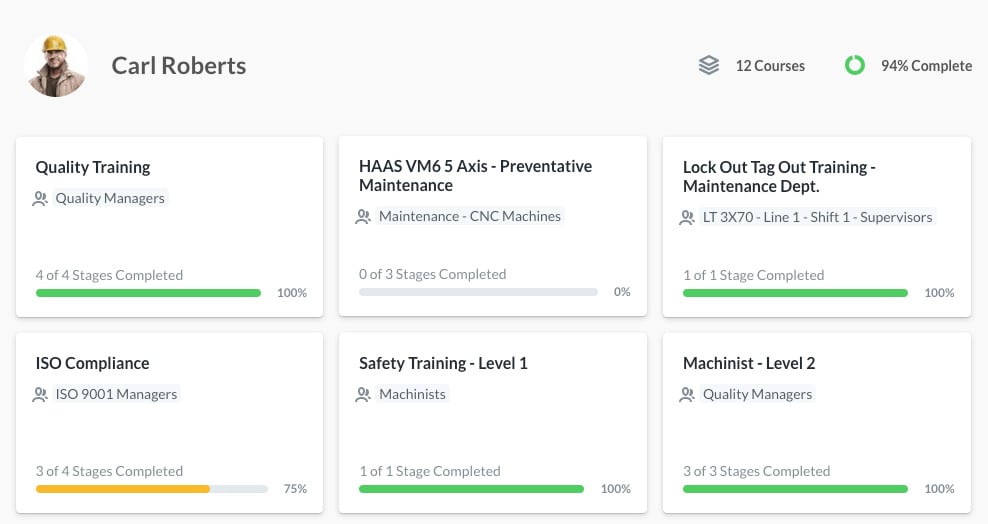
Continuous Improvement
4 min read
Manage Workforce Training with Dozuki Courses

At Dozuki, we’ve made it our mission to make Standard Work an industry standard. We envision documented standards and worker knowledge continuously improving alongside one another—finally removing them from their respective silos.
As CEO of Dozuki, I’ve spent hundreds of hours talking to manufacturers of all sizes and industries. Throughout these conversations, one topic kept coming up — “it’s so hard to confirm and manage the training of our documented procedures.”
With this in mind, we got to building.
Dozuki Courses
Dozuki Courses allows users to manage worker training and competency within the Dozuki platform. This allows businesses to leverage their standardized procedures (guides) to create training curriculum for any employee. Finally bridging the gap between continuous improvement and employee knowledge.
Train to Approved Standards
Training is only as good as the standards that your workforce is trained to. Using Courses, managers will never have to worry about outdated training again.
"Never worry about outdated training again."
As your procedures change and improve, so will your training material. This helps reduce process waste and improve quality by ensuring that current best practices are always followed.

Centralize Training Management
Courses enables you to easily view and manage training data from one place. This provides real-time insights into workforce competency — increasing visibility and reducing the endless hours spent updating spreadsheets.
"Real-time insights into workforce competency"
As training becomes outdated or needs reinforcement, employees are notified that retraining is required.

Automate Training Assignment
With Courses, you can integrate HR and time tracking software to efficiently assign training curriculum. Teams based on roles, departments, or locations can easily be assigned training requirements — streamlining training management for new hires and those who change teams or roles.
Relying on-the-job (1-to-1) training not only removes the benefits of standardized procedures, but it's impossible to automate and scale. Courses allows organizations to bring training from 1-to-1 to 1-to-many, making management of employee turnover and recurring training much easier.
“Courses allows us to confidently track operator competency for ISO compliance.”
Brad Matthews, Industrial Engineer, Husqvarna
Drive Learning & Improvement
Employees can manage their training requirements in a self-guided environment. At a glance, they can see which trainings have been completed or still need work. This empowers employees to take skills development into their own hands and fosters a culture of continuous improvement.

Setting High Standards for Training
For manufacturers, training has never been about isolated educational events. Training is a continuous process that requires maintenance and care.
Just like process improvement efforts, top-tier organizations need to treat training as an ongoing opportunity to empower their workforce and raise quality standards.
Courses will allow manufacturers to take workforce training to the next level.
Related Posts
View All Posts
Frontline Digital Transformation
Creating The Frontline Of The Future, Part 9
6 min read
Workforce Development You’ve probably heard the adage, the tool is as only as good or bad as the user. We believe this principle has broad applications in digital...
Continue Reading
Podcast
Insights from a Decade of Manufacturing Workforce Trends
2 min read
In this insightful podcast episode, join Thomas Davis, an experienced training manager, as he unravels the transformative shifts in the manufacturing workforce...
Continue Reading
Training
How Airstream Reduced Turnover by 83% with Dozuki
8 min read
By 2017, Airstream was experiencing record-breaking demand. Weekly production targets hit 120 trailers, and the company quickly outgrew its existing footprint. Teams were...
Continue Reading


